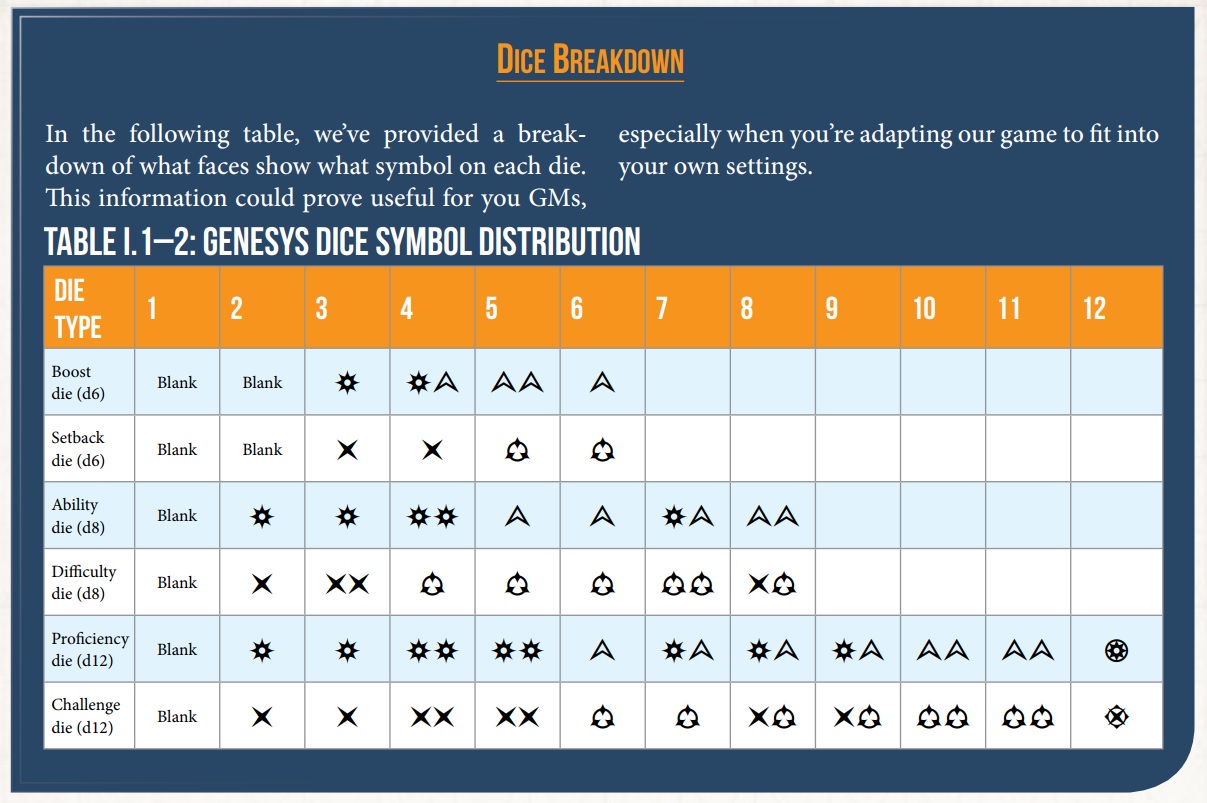The dice distribution is obviously a homage to Genesys' dice distribution, with a purposeful evocation of the same design purpose as those dice: The circle / triangle results are rarer but possibly more meaningful (generally they are closer to "hits"), and then the plus / minus results are more common across the board. However, they mostly mutually exclusive, leading into a situation where if you roll a lot of plusses, you probably didn't roll a lot of circles, and vice versa.
If used in the Genesys model (You roll basically two pools of dice, and subtract the results of one from the other), it's very likely that you will be left with a more complex result than success / failure.
To my own use cases, I feel like dividing the dice into two symbols each has its merits in that it gives a designer the ability to control the symbols a game uses. The distributions themselves are still up in the air, but the current distributions already have a pretty good spread when you break them down.
With the d6, there's a 1/3 chance for a blank (which, by the way, can be used as a result in on itself as well), 1/2 chance of the minor symbol, and 1/3 chance for the major symbol. This maps into a d6 with 5-6 counting as hits, with an extra layer of the second symbol results.
With the d10, there's a 1/10 chance for a blank, 1/2 chance for the major symbol, 6/10 chance for the minor symbol, and 1/10 chance for double major symbol. This is closer to a 50/50 hit die, with a slightly higher chance for the minor symbols, and a "critical" result with the double major symbol.
These both are very close to common dice distributions in dice pool games when you think about it. They just have additional nuances with the secondary symbols.
To me, a flatter distribution with more symbols, like you suggested, has its merits for some designers, but I think the way I have distributed things is perhaps easier for gameplay purposes. I just feel like it increases the complexity of the design space exponentially when more symbols are added per die, as it feels necessary to use all symbols in the dice.
I dunno. The symbols will be open source, so if people want to make their own dice using the symbols with different distributions and symbol combinations, for sure. I just personally don't feel too inspired by the flatter distributions, personally. Sorry.


